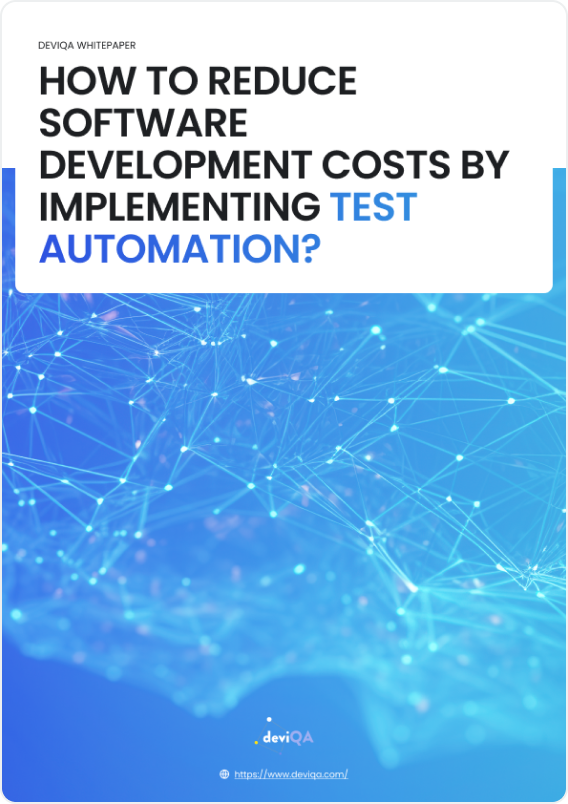
Test automation
How to reduce software development costs by implementing test automation
This white paper highlights the crucial link between product quality and business success. Drawing inspiration from NASA's success, we stress the importance of delivering high-quality software for user satisfaction and business reputation. The focus turns to automation testing, a key player in minimizing bugs and enhancing efficiency.
Key takeaways from the white paper:
- 1. Average cost of custom software development
- 2. Factors affecting software development cost
- 3. The cost of software failure
- 4. Role of software testing in software development life cycle
- 5. Manual vs automation testing
- 6. How to reduce software development costs with test automation
- 7. Test automation ROI

